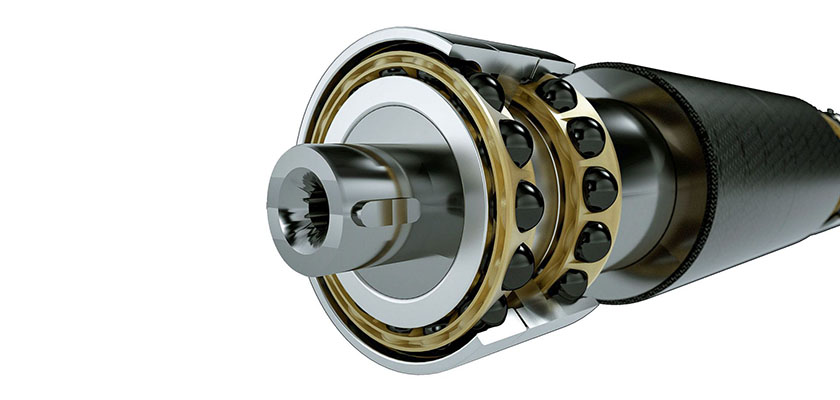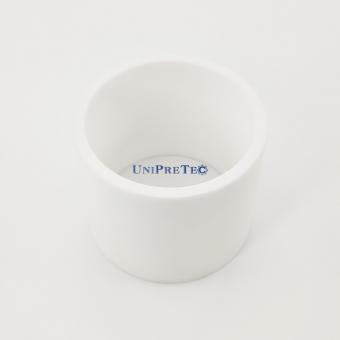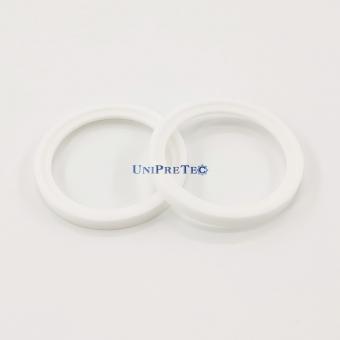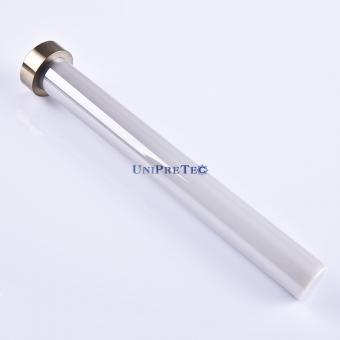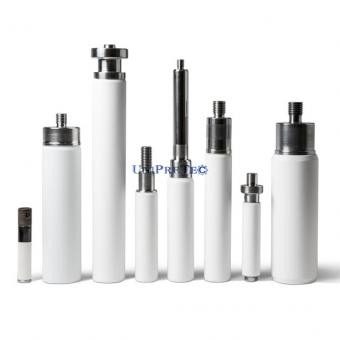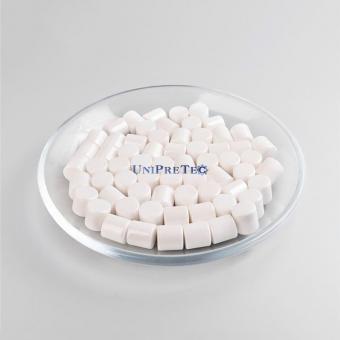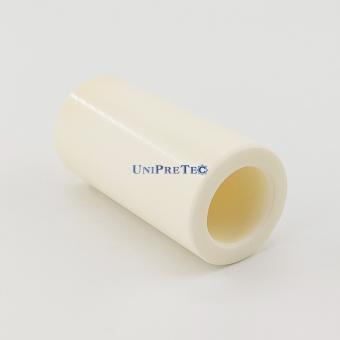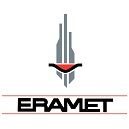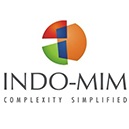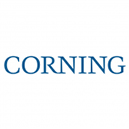Silicon nitride ceramic is an inorganic material ceramic that does not shrink during sintering. Silicon nitride is very strong, especially hot-pressed silicon nitride, which is one of the hardest materials in the world. It has high strength, low density, high temperature resistance and other properties.
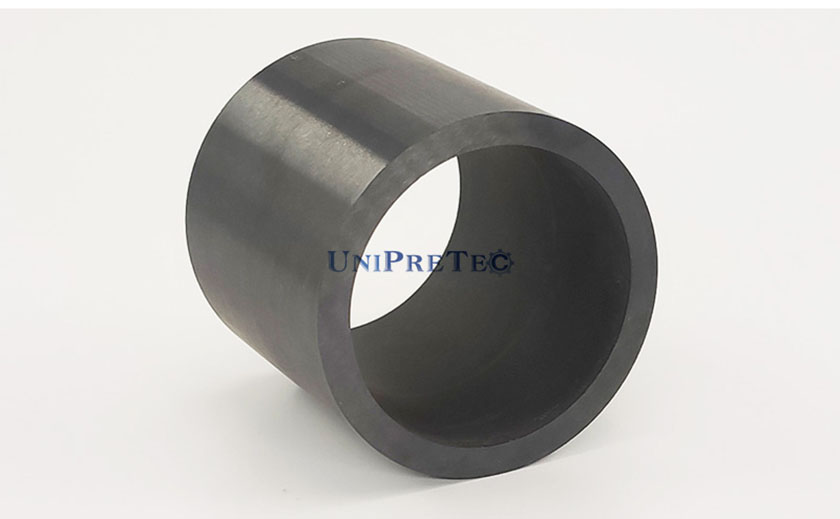
Firstly, let’s see the entire production process of silicon nitride ceramics.
There are two production methods for silicon nitride ceramic products, namely, reaction sintering and hot pressing sintering. The reaction sintering method is to shape silicon powder or a mixture of silicon powder and silicon nitride powder according to the general production method of ceramic products. Then in the nitriding furnace, it is pre-nitrided at 1150~1200 degree C, after obtaining a certain strength, it can be machined on the machine tool, and then further nitriding at 1350~1450 degree C for 18~36h, until all becomes silicon nitride . The product thus obtained has accurate dimensions and stable volume. The hot pressing sintering method is to press silicon nitride powder and a small amount of additives (such as MgO, Al2O3, MgF2, AlF3 or Fe2O3, etc.) at a pressure above 19.6MPa and sintering under the conditions of 1600~1700 degree C. Generally, products made by hot pressing sintering have higher density and better performance than products made by reaction sintering.
Secondly, come to understand the various process links in the production of silicon nitride ceramics.
Molding
There are many types of silicon nitride ceramic molding processes, and one of them will be briefly introduced here:
Injection molding
The injection molding technology combines the traditional ceramic process and organic polymer chemically, and flexibly introduces the method of polymer monomer polymerization into the ceramic molding process, by preparing ceramic slurry with low viscosity and high solid content, the net size forming of ceramic body with high strength, high density and good uniformity is realized.
Gel injection molding is a very practical technology, it has the following notable characteristics:
It can be applied to various ceramic materials to form ceramic parts of various complex shapes and sizes;
Since the setting process and the injection molding operation are completely separated, the formed body has uniform composition, uniform density and few defects;
The setting time of the slurry is short and controllable. Depending on the polymerization temperature and the amount of catalyst added, the setting time is generally controllable within 5-60min;
The mold used in this process is a non-porous mold, and there is no special requirement for the mold, which can be metal, glass or plastic;
The content of organic matter in the green body is relatively small, and its mass fraction is generally 3% to 5%. But the strength is higher, generally above 10MPa. The green body can be machined (turning, grinding, planing, milling, drilling, sawing, etc.), thereby eliminating or reducing the processing after sintering;
This is a net size forming technique. Due to the uniform composition and density of the green body, it will not deform during the drying and sintering process, and the sintered body can maintain the shape and size ratio during forming;
The ceramic material used is high solid phase (volume fraction not less than 50%) and low viscosity (less than 1Pas). The solid content of the slurry is a factor that affects the density, strength and uniformity of the formed body. The viscosity is related to the shape of the formed body and the exhaust effect of the slurry. This is also the difficulty of applying this technology and the key to its success.
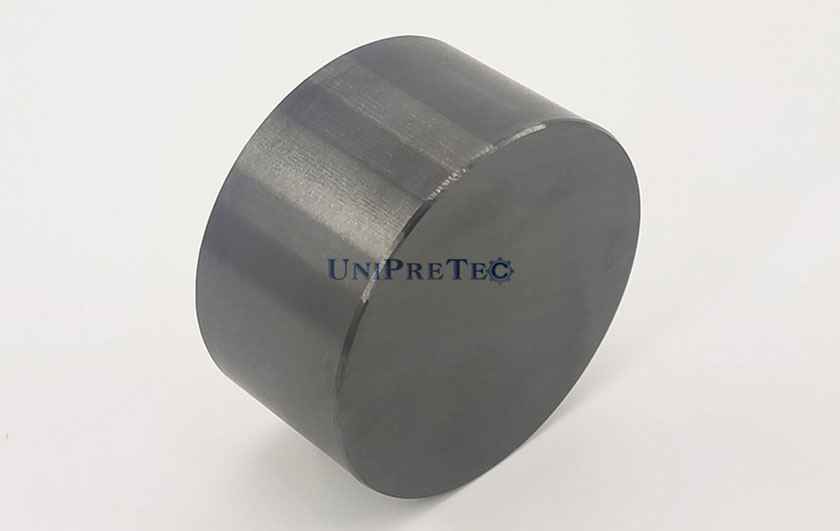
Sintering process
The commonly used sintering methods for dense silicon nitride ceramic materials include the following: reaction sintering, air pressure sintering, hot isostatic sintering and hot pressing sintering. In recent years, spark plasma sintering, pressureless sintering and other sintering methods have also attracted scholars' attention due to their different advantages.
(2) Reaction sintering
Reactive sintering refers to the process of passing the raw material molded body through the solid phase, the liquid phase and the gas phase at a certain temperature to undergo chemical reactions with each other, while simultaneously performing densification and synthesis of prescribed components to obtain a predetermined sintered body. The existence of liquid phase in the reaction sintering process is very important. The process of preparing silicon nitride ceramics by reaction sintering is: mixing high-purity silicon powder with a binder and forming it, then putting it in a N2 atmosphere or immersing it in molten silicon to react silicon or nitrogen or molten silicon in the green body to prepare nitrogen silicon products.
(3) Pressureless sintering
Pressureless sintering refers to the process of sintering a ceramic green body with a certain shape at high temperature under normal pressure (0.1MPa), and physical and chemical reactions to form a compact, hard, stable volume, and a certain performance. In order to reduce the cost of silicon nitride materials, the use of cheap and low-purity β-Si3N4 powder was used to prepare silicon nitride ceramic materials through pressureless sintering. The nested structure formed by the particles has a relatively uniform structure and no abnormal growth of crystal particles.
(4) Spark plasma sintering
Spark plasma sintering has the characteristics of fast heating, uniform heating and sintering temperature, which can complete the rapid sintering of dense sintered bodies, and this has little effect on the preparation process of high thermal conductivity silicon nitride sintering, and long-term high temperature is still required after sintering thermal treatment to obtain a better grain growth of silicon nitride ceramic material.
(5) Resintering
Resintering refers to placing the silicon nitride body after reaction sintering in silicon nitride powder in the presence of a sintering aid, and then re-sintering at a high temperature to obtain a dense silicon nitride product. The sintering aid can be introduced during ball milling of silicon powder, or can be introduced after reaction sintering by dipping. Because the reaction sintering process can be pre-processed, and the shrinkage during the re-sintering process is only 5%-10%, this method can prepare parts with excellent performance and complex shapes.
Silicon nitride having a strong covalent bond structure, it is very difficult to sinter, and a silicon nitride material even at high temperatures, nitrogen and silicon diffusion coefficient is small, while above 1600 degree C, the silicon nitride will significant decomposition, therefore, how to achieve high strength and dense silicon nitride ceramic material produced at low cost technology is the current focus of the silicon nitride sintered research process.
Silicon nitride ceramic application
Using Si3N4's light weight and high rigidity, it can be used to manufacture ball bearings. It has higher precision than metal bearings, generates less heat, and can operate in higher temperatures and corrosive media. The steam nozzle made of Si3N4 ceramics has the characteristics of wear resistance and heat resistance, and no obvious damage after being used in a 650 degree C boiler for a few months, while other heat and corrosion resistant alloy steel nozzles can only be used for 1-2 months under the same conditions .
The above are just a few application examples of Si3N4 ceramics as structural materials. With the improvement of Si3N4 powder production, molding, sintering and processing technology, its performance and reliability will continue to improve, and silicon nitride ceramics will be more widely used. Due to the improvement of the purity of Si3N4 raw materials, the rapid development of Si3N4 powder molding technology and sintering technology, and the continuous expansion of application fields, Si3N4 is becoming an engineering structural ceramic, occupying an increasingly important position in the industry.








